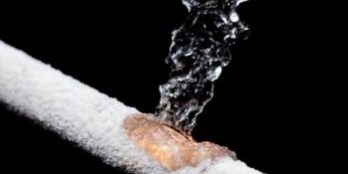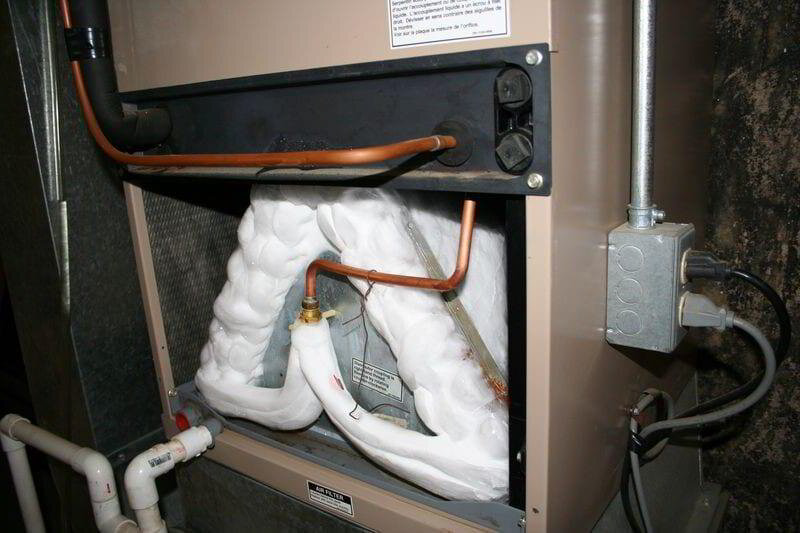Steps to Follow If Your AC Pipe Gets Frozen: Key Advice
Steps to Follow If Your AC Pipe Gets Frozen: Key Advice
Blog Article
They are making a number of good points regarding How can I fix an air conditioner’s frozen pipe? as a whole in this post following next.

Intro
Discovering that your air conditioning pipe is iced up can be worrying, particularly during hot summertime when you count on your a/c unit one of the most. Comprehending what to do in such a scenario is vital to stop more damages to your air conditioning system and ensure your comfort indoors.
Understanding the Causes
Several variables can add to the freezing of an air conditioning pipe. Recognizing these causes can help you resolve the problem efficiently.
Absence of Airflow
One typical cause of a frozen a/c pipeline is inadequate air flow. When the airflow over the evaporator coil is limited, it can trigger the coil to drop below freezing temperature, bring about ice formation on the pipe.
Low Refrigerant Levels
Insufficient refrigerant degrees in your AC system can likewise lead to an icy pipeline. Reduced refrigerant degrees can create the stress in the system to drop, resulting in the freezing of wetness on the evaporator coil.
Cold Weather Conditions
In chillier climates, freezing temperatures outside can contribute to the cold of air conditioner pipelines. If your a/c system is not appropriately insulated or if there are leaks in the ductwork, cold air can penetrate the system, causing the pipeline to freeze.
Dirty Air Filters
Dirty or blocked air filters can limit air movement in your AC system, leading to numerous concerns, including an icy pipe. It's essential to change or clean your air filterings system on a regular basis to guarantee correct airflow and protect against ice buildup.
Indicators of a Frozen AC Pipe
Acknowledging the indicators of an icy air conditioning pipeline is critical for prompt action.
Minimized Airflow
If you see a substantial decrease in airflow from your vents, it could indicate a frozen pipe.
Ice Buildup on the Pipe
Visible ice accumulation on the refrigerant line or the evaporator coil is a clear indicator of a frozen AC pipeline.
Odd Sounds from the Unit
Uncommon noises, such as hissing or bubbling, originating from your a/c system can signal that there's ice existing on the pipe.
Immediate Actions to Take
When faced with an icy air conditioner pipe, it's vital to act quickly to prevent further damage to your cooling system.
Switching off the AC
The first step is to turn off your air conditioning system to prevent the system from running and aggravating the issue.
Checking for Blockages
Evaluate the location around the indoor system for any kind of blockages that may be blocking airflow, such as furniture or curtains.
Thawing the Pipe
You can utilize mild approaches like positioning towels taken in cozy water around the icy pipeline to assist thaw it gradually.
Safety nets
Taking preventive measures can assist avoid future occurrences of a frozen AC pipeline.
When DIY Methods Fail
If your efforts to thaw the pipeline or address various other concerns are not successful, it's time to employ an expert.
Significance of Hiring a Professional HVAC Technician
A qualified HVAC professional has the knowledge and tools essential to identify and fix problems with your AC system safely and effectively.
Routine Maintenance Checks
Set up routine upkeep consult a specialist HVAC service technician to ensure that your air conditioner system is running effectively.
Changing Air Filters
Consistently change or clean your air filters to prevent airflow restrictions and maintain optimum performance.
Protecting Exposed Pipes
If your AC pipes are exposed to cool temperature levels, take into consideration shielding them to stop cold throughout winter months.
Looking For Professional Help
If DIY approaches fail to resolve the issue or if you're unclear about how to proceed, it's best to seek support from a qualified HVAC technician.
Conclusion
Managing a frozen AC pipeline can be a frustrating experience, however knowing just how to react can help reduce damages and recover comfort to your home. By comprehending the reasons, acknowledging the indicators, and taking prompt action, you can efficiently attend to the concern and protect against future occurrences.
Frozen AC Line: Why It Happens & What To Do About It
A frozen AC line can be a rather peculiar sight in a place like Phoenix, Arizona where nothing ever freezes. In this post, we’ll discuss what makes an air conditioner line frozen – and what you can do about it.
Dirty Air Filters
Did you know that you should be cleaning or replacing your air filters on a monthly basis? Failing to do this can result in airflow issues that, in turn, cause your evaporator coils and lines to freeze over. You’ll notice a buildup of ice on both components, although the buildup on your pipes will, of course, be more evident unless you open your air condition up to reveal the coils.
What To Do About It
Give your air filter a good cleaning if it’s reusable. If not, replace the filter outright. Next, switch your air conditioner’s fan setting on and leave it there for 2-3 hours. This will draw warm air in, helping to thaw your evaporator coil. You can also check out this article for some tips on cleaning the coils themselves if you’d like to speed the process up. Before you switch the unit back to its normal state, make sure the supply vents are completely unobstructed and free of dust or other debris.
If you keep having this issue even after replacing your filters regularly, contact a local HVAC repair company and have them inspect your evaporator coil, ductwork, and any other components that may be at fault. If you live in the Phoenix, Arizona area, give American Home Water and Air a call.
Low Refrigerant Levels/Leakage
What To Do About It
Contrary to what air conditioner “recharge” companies often tell their clients about refrigerant, it should never need to be simply refilled. You see, refrigerant runs in what experts refer to as a “closed loop.” Refrigerant really shouldn’t be leaving that loop. If it is, you’ve got a leak.
Paying someone to come and pump more refrigerant into your system (aka “recharge” it) isn’t the solution. Doing that will simply kick the can down the road. Besides, refrigerant leaks can be harmful to the environment and people in your home.
Rather, you need to take care of the leak with the help of a technician. Check out this article for some more information about dealing with air conditioners that are leaking refrigerant. Before you contact a technician, switch your thermostat to the off position. Then, switch the fan setting on and let it run for 2-3 hours so the unit can thaw.
Improper Temperature Setting
Improper temperature settings can also cause a drop in your air conditioner’s pressure. What many people don’t realize is that air conditioners are actually designed to run when temperatures have fallen above roughly 60 degrees Fahrenheit. If you run the unit when it’s cold outside, you’ll run into many issues, including frozen components.

Hopefully you enjoyed our section on Have a Frozen AC Line? Here’s How to Fix It. Thanks a lot for taking a few minutes to read our blog. Make sure you take the time to distribute this article if you enjoyed reading it. Thank you for your time invested reading it.
Click Here Report this page